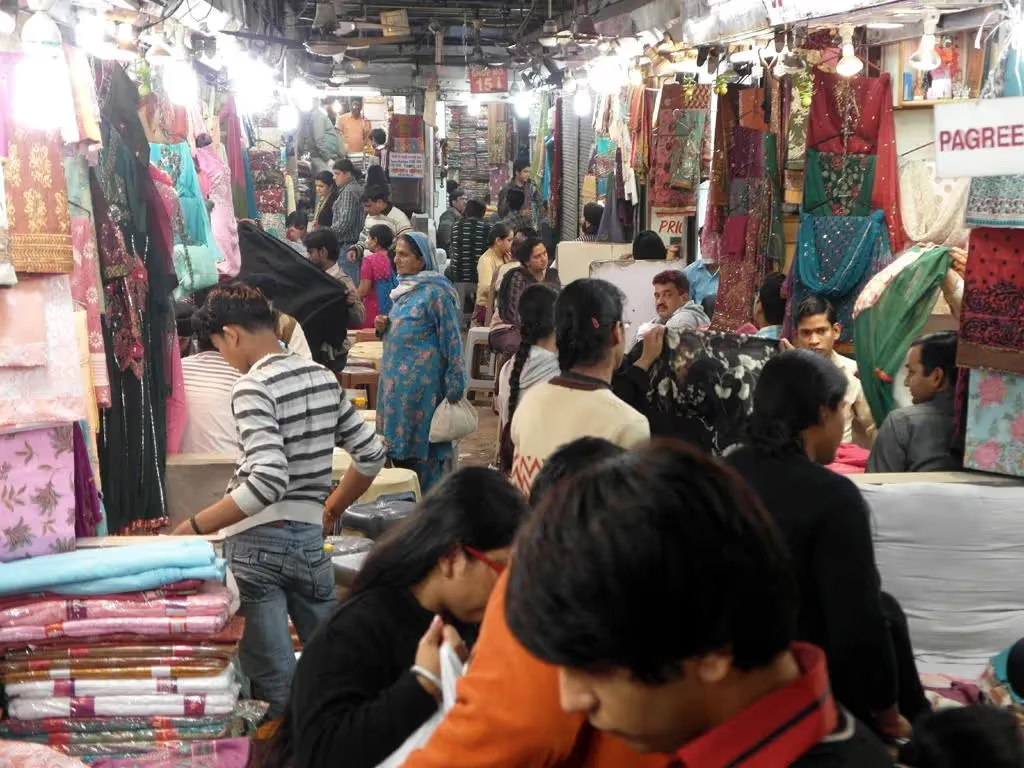A biweekly newsletter with public space news, resources, and opportunities.
A curated dispatch on all things public markets plus the latest announcements from the Market Cities Program.
Please note that these Hall of Shame nominations were written in a moment in time (most over a decade ago) and likely have since changed or even been transformed. If the above entry is now great, or still not so great, go ahead and comment below on how it has evolved or nominate it as a great place.


Chandni Chowk is defined by variety, with vendors and stores selling every imaginable type of good, including finished items and raw materials. Shoppers can purchase food prepared or raw, goods for retail or wholesale, clothes assembled or basic fabrics, and much more. The side streets off Chandni Chowk host smaller markets specializing in various items. Katra Neel is the cloth market where Saris, silk and any other fabric imaginable are sold. Nai Sarak sells stationery and books while Lal Kuan specializes in hardware. Tilak is an industrial chemical market, and Dariba is known for its dazzling array of silver and gold jewelry. Other side streets and alleys feature books, spice, electronics (both legal and bootleg), or wholesale restaurant supplies. Many shop owners from the greater Delhi area will visit Chandni Chowk to stock up on goods, and much of its business is in wholesale.
The only thing more impressive than the variety of goods is the number of people - Chandni Chowk is famously crowded and chaotic. Visitors looking for a respite from the crowds can drift out to the edges of the street to the refuge of cafés and restaurants set in colonial-style buildings surrounding the market area. The market draws shoppers from all around Old and New Delhi with several links to the national rail system and a direct line into the heart of New Delhi on the metro.
Originally built in the 17th century by legendary Mughal Emperor Shah Jahan, Chandni Chowk is still one of the largest markets in India, occupying a long street reaching out from Delhi’s iconic Lahori Gate all the way to the Fatehpuri Masjid mosque. Originally designed by the emperor’s favorite daughter, Jahanara Begum Sahib (later an empress herself), the market was arranged in a square and was divided by canals with a central reflecting pool that lent the market its name, translated in English as “Moonlight Square.” Although much has changed since the days when it would host grand Mughal processions to and from the Red Fort, the street has always hosted a market alongside and integrated with its mansions, smaller homes, government buildings, and religious buildings. Unlike many American cities, Old Delhi never moved its commerce indoors to well-delineated shopping districts and remains a classic Market City, with Chandni Chowk as its spine and no obvious boundary where the market ends and the rest of the city begins. It has recently become a popular set for Bollywood films, some set in the modern era and others taking advantage of its historic architecture for period pieces.


*Please note that these Hall of Shame nominations were written in a moment in time (most over a decade ago) and likely have since changed or even been transformed. If the above entry is now great, or still not so great, go ahead and comment below on how it has evolved or nominate it as a great place.